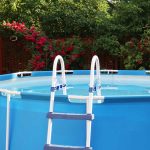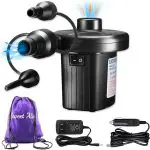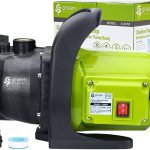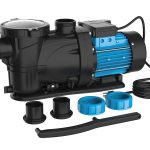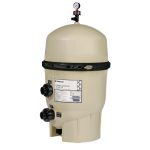To clean a cloudy pool, begin by balancing the pool’s pH levels and adjusting the chlorine levels accordingly. Then, use a pool clarifier or flocculant to remove small particles that are causing cloudiness, followed by thorough vacuuming and cleaning of the filters to ensure efficient water circulation.
Additionally, regularly brushing the pool walls and surface, along with frequent monitoring of water chemistry, are essential for maintaining a clear and sparkling pool. Remember to clean pool equipment, such as skimmers and pumps, to prevent further contamination. Overall, proper and regular maintenance is key to keeping a pool clear and enjoyable for swimming.
1. Why Is Your Pool Cloudy?
Cloudy pools can result from several factors, such as a chemical imbalance, a poor filtration system, or a lack of maintenance. These issues can lead to water that appears hazy or murky, making it unappealing for swimming. To address a cloudy pool, it is important to identify the root cause.
Start by testing the water’s chemical levels and adjusting them accordingly. Next, ensure that the filtration system is clean and functioning properly. Regularly clean the pool, removing any debris or foreign particles that could contribute to cloudiness. By addressing these issues and maintaining a proper balance of chemicals, your pool can once again be clear and inviting for a refreshing swim.
2. Diagnosing The Problem
When diagnosing the problem of a cloudy pool, it is important to start by testing the water quality. This involves checking the chemical levels such as pH, chlorine, and alkalinity. Inspecting the filtration system is also crucial, as any issues with the filter can contribute to cloudiness.
Look for any debris or algae in the pool, as these can also cause the water to appear cloudy. If the water quality is off or the filtration system is not functioning properly, taking the appropriate measures to balance the chemicals and clean the filter will help clear up the cloudiness.
Regular maintenance and monitoring of the pool’s water quality and filtration system will prevent future cloudiness issues.
3. Choosing The Right Pool Cleaning Tools
To clean a cloudy pool, it is important to choose the right pool cleaning tools. The first tool you will need is a pool skimmer. This tool helps to remove leaves, debris, and insects from the water’s surface. The next tool is a pool brush, which is used to scrub the walls and floor of the pool. This helps to remove algae and stains that may be contributing to the cloudiness.
Finally, a pool vacuum is necessary to remove any sediment and dirt that has settled on the bottom of the pool. By using these three tools in combination, you can effectively clean your cloudy pool and restore it to its sparkling clear state.
A. Adjusting The Chemical Balance
To clean a cloudy pool, it is important to start by testing and balancing the pH levels. This ensures that the water is within the safe range and prevents cloudiness. Additionally, checking and adjusting the chlorine levels is crucial for maintaining a clean and clear pool.
By regularly testing the chemical balance, you can ensure that the water remains free from impurities and bacteria. Moreover, proper filtration and circulation of the water are important factors in clearing up cloudiness. Keep in mind to clean and maintain the pool filter regularly to ensure its efficiency.
Furthermore, regularly skimming and removing debris from the pool surface helps prevent cloudiness and maintain water clarity. Overall, a combination of proper chemical balance, filtration, and debris removal is the key to cleaning a cloudy pool.
B. Cleaning And Maintaining The Filtration System
To keep your pool sparkling clear, it’s essential to regularly clean and maintain the filtration system. Backwashing the filter is a crucial step in this process. This involves reversing the water flow to flush out any trapped debris and impurities.
By doing so, you prevent these particles from recirculating into the pool water. Additionally, it is important to clean or replace the filter cartridges as needed. Over time, these cartridges can become clogged with dirt and debris, compromising their efficiency.
By following these steps and ensuring proper filtration, you can effectively clean a cloudy pool and maintain its clarity. Remember to regularly check and clean the filter to keep your pool water crystal clear.
C. Removing Debris And Algae
A cloudy pool can be cleaned by removing debris and algae. To start, skim the surface using a pool net or skimmer basket, removing leaves and other floating debris. Next, brush the pool walls and floor to dislodge any stuck-on algae or dirt.
This will help to improve water clarity. Finally, vacuum the pool to remove any remaining debris and algae particles. Make sure to use a pool vacuum appropriate for your pool type. Regular cleaning and maintenance will keep your pool looking its best and ensure a clean and inviting swimming environment for you and your guests.
Remember to always follow proper pool maintenance procedures and chemical balance for optimal results.
D. Shocking The Pool
Shocking the pool is a crucial step in cleaning a cloudy pool. Understanding the purpose of shocking is essential. Properly shocking a pool involves adding a high concentration of chlorine or non-chlorine shock product to eliminate bacteria, algae, and other contaminants.
This process helps restore the pool water’s clarity and balance. Before shocking, it is important to test the water’s pH and chlorine levels. The shock product should be added in the evening or at dusk to allow it to work overnight.
Follow the manufacturer’s instructions and dosage guidelines for the specific shock product being used. Wait until the chlorine levels drop to a safe range before swimming. Regularly shocking the pool can prevent cloudy water and keep the pool clean and inviting.
5. Prevention Is Key
Regular maintenance schedules and proper pool water circulation are vital for preventing a cloudy pool. By sticking to a regular maintenance routine, you can keep your pool water clean and clear. This involves checking and adjusting the water’s pH level, regularly skimming the surface to remove debris, and emptying the skimmer and pump baskets.
Additionally, it’s essential to clean and maintain your pool equipment, such as filters and pumps, as they play a crucial role in keeping the water clear. Regularly cleaning the pool’s walls and floor by brushing and vacuuming will also help prevent cloudiness.
Remember, prevention is key to maintaining a clean and inviting pool for you and your guests to enjoy.
6. Hiring Professional Pool Cleaning Services
Cleaning a cloudy pool can be a daunting task. However, hiring professional pool cleaning services can make a difference. There are several benefits of opting for professional cleaning. Firstly, professionals have the expertise and knowledge to diagnose and treat the root cause of cloudiness.
Secondly, they have the necessary tools and equipment to thoroughly clean the pool, ensuring all debris and contaminants are removed. Additionally, professional cleaners can also balance the pool’s chemicals, which is essential for maintaining water clarity. Moreover, by hiring professionals, you can save time and effort that would have been spent on DIY cleaning.
Lastly, professional cleaning services offer regular maintenance plans to keep your pool sparkling all year round. So, when considering the cleanliness of your pool, don’t hesitate to hire professionals for a hassle-free and crystal-clear swimming experience.
7. Troubleshooting Common Pool Cleaning Issues
Cloudy pool water can be a frustrating issue to deal with. However, there are solutions to troubleshoot and fix common pool cleaning problems. One such issue is green pool water, which is often caused by algae growth. To combat this, ensure proper filtration and circulation of water, regular brushing and vacuuming, and maintaining the right chemical balance.
Excessive foaming, on the other hand, can result from factors like high pH levels or the presence of contaminants. To resolve this, consider using anti-foam agents and adjusting the pH as needed. By addressing these common pool cleaning issues, you can enjoy a clear and inviting pool all season long.
So, keep these troubleshooting tips in mind to make your pool sparkling clean!
8. Frequently Asked Questions
Cleaning a cloudy pool is essential to maintain its clarity and hygiene. The frequency of cleaning depends on several factors such as pool usage and environmental conditions. Generally, it is recommended to clean the pool at least once a week to prevent the accumulation of debris and contaminants.
However, in high-usage pools or during periods of heavy rainfall, more frequent cleaning may be necessary. As for using household cleaners, it’s best to avoid them as they can disrupt the chemical balance of the pool water and cause further cloudiness.
Instead, invest in pool-specific cleaners and follow the manufacturer’s instructions for optimal results. Regular maintenance and proper water chemistry testing will help ensure a clean and sparkling pool for you and your family to enjoy.
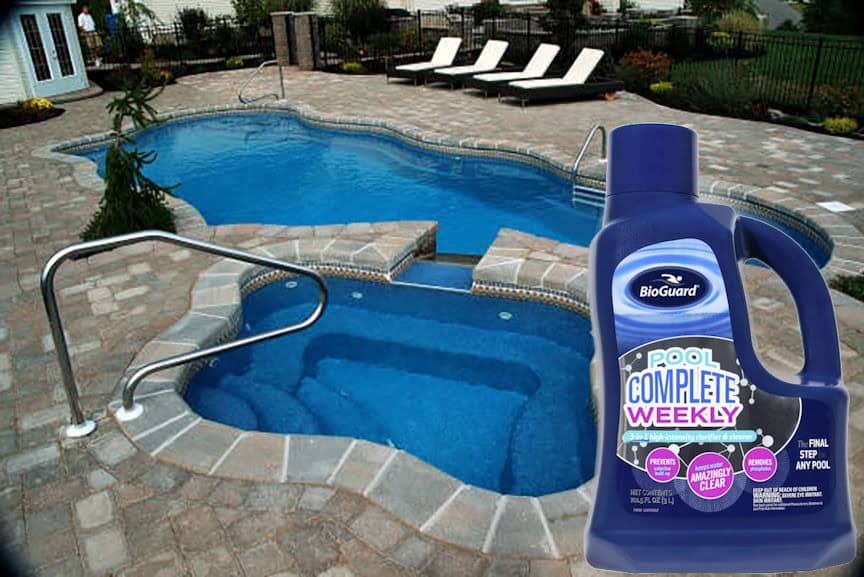
Credit: www.ultramodern.com
10. Additional Resources
Cleaning a cloudy pool can be a challenging task, but with the right resources and products, it can be done effectively. Pool cleaning guides are a great additional resource to refer to when dealing with cloudy water. These guides provide step-by-step instructions on how to tackle the issue and restore your pool’s clarity.
In addition, using recommended pool cleaning products can greatly assist in achieving optimal results. From chlorine to algae control chemicals, these products are designed to effectively eliminate impurities in the water. By following the guidance provided in these resources and utilizing the right products, you can successfully clean your cloudy pool and enjoy crystal-clear water once again.
Frequently Asked Questions For How To Clean A Cloudy Pool?
How Often Should I Clean My Pool To Prevent Cloudiness?
Cleaning your pool once a week is recommended to prevent cloudiness. Regular maintenance includes skimming, vacuuming, and checking the chemical levels.
What Causes A Pool To Become Cloudy?
Cloudiness in a pool can be caused by various factors such as improper pH balance, insufficient filtration, high levels of organic debris, or inadequate sanitizer levels.
How Can I Clear Up A Cloudy Pool Quickly?
To clear up a cloudy pool quickly, you can try shock chlorination, adding a pool clarifier, backwashing the filter, or using a flocculant to help settle debris. Always follow the product instructions and consult a professional if needed.
Conclusion
Maintaining a clear and sparkling pool is a crucial aspect of pool ownership. With the right approach and regular maintenance, you can easily tackle a cloudy pool. Start by testing the water’s pH and alkalinity levels and adjusting them as necessary.
Skimming the surface to remove debris and regularly cleaning the pool filter are also essential steps. Additionally, shocking the pool with chlorine or a pool clarifier can help remove any stubborn cloudiness. Remember to brush the pool walls and floor to dislodge any algae or buildup.
Finally, regularly checking and balancing the pool chemicals will ensure a crystal-clear swimming experience. By following these simple yet effective strategies, you can enjoy a beautiful and inviting pool all season long. Happy swimming!









